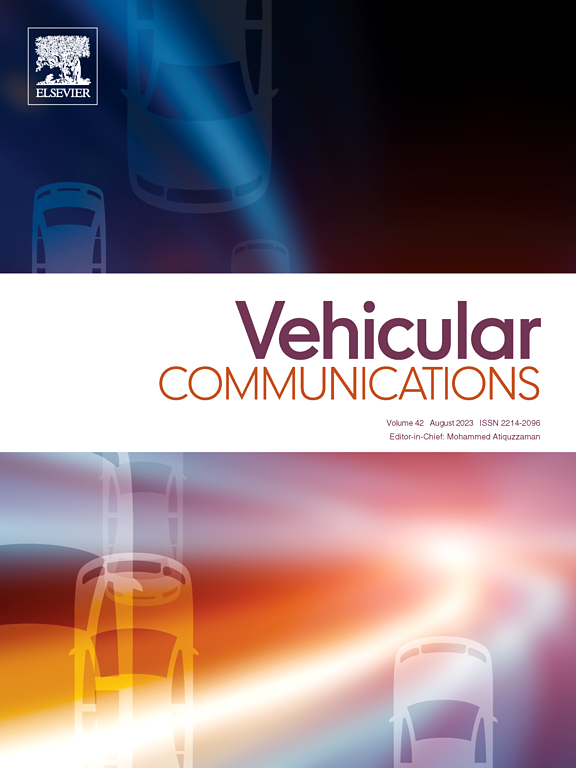Detection of zero-day attacks via sample augmentation for the Internet of Vehicles
IF 6.5
2区 计算机科学
Q1 TELECOMMUNICATIONS
引用次数: 0
Abstract
Detecting zero-day attacks is a critical challenge in the Internet of Vehicles (IoV). Due to the limited availability of labeled attack data, anomaly-based methods are predominantly employed. However, the variability in the driving environment and behavioral patterns of vehicles introduces significant fluctuations in normal behavior, which in turn leads to high false positive rates when using these methods. In this work, we propose a novel detection method for zero-day attacks in IoV through sample augmentation. We first analyze the similarities between known and zero-day attacks in IoV. Based on the analysis, a Few-shot Learning Conditional Generative Adversarial Network (FLCGAN) model with multiple generators and discriminators is developed. Within this framework, an attack sample augmentation algorithm is designed to enhance input data by expanding the known attack dataset, thereby reducing false positives. To address the data imbalance caused by the limited number of input attack samples, an ensemble focal loss function is incorporated into the generator to ensure diversity and dispersion of the generated samples. Additionally, a collaborative focal loss function is introduced into the discriminator to improve the classification of difficult-to-classify data. A theoretical analysis is also conducted on the coverage of samples generated by the model. Extensive experiments conducted on the IoV simulation tool Framework For Misbehavior Detection (F2MD) demonstrate that the proposed method surpasses existing approaches in both detection effect and detection delay for zero-day attacks.
基于车联网样本增强的零日攻击检测
检测零日攻击是车联网(IoV)面临的关键挑战。由于标记攻击数据的可用性有限,主要采用基于异常的方法。然而,驾驶环境和车辆行为模式的可变性会导致正常行为的显著波动,这反过来又导致使用这些方法时的高假阳性率。在这项工作中,我们提出了一种通过样本增强来检测车联网零日攻击的新方法。我们首先分析了车联网中已知攻击和零日攻击的相似之处。在此基础上,提出了一种具有多个生成器和鉴别器的少镜头学习条件生成对抗网络(FLCGAN)模型。在此框架内,设计了攻击样本增强算法,通过扩展已知攻击数据集来增强输入数据,从而减少误报。为了解决输入攻击样本数量有限导致的数据不平衡问题,在生成器中加入了一个集合焦点损失函数,以保证生成样本的多样性和分散性。此外,在鉴别器中引入协同焦点损失函数,提高了对难分类数据的分类能力。并对模型生成的样本覆盖率进行了理论分析。在车联网仿真工具框架错误行为检测(F2MD)上进行的大量实验表明,所提出的方法在零日攻击的检测效果和检测延迟方面都优于现有方法。
本文章由计算机程序翻译,如有差异,请以英文原文为准。
求助全文
约1分钟内获得全文
求助全文
来源期刊

Vehicular Communications
Engineering-Electrical and Electronic Engineering
CiteScore
12.70
自引率
10.40%
发文量
88
审稿时长
62 days
期刊介绍:
Vehicular communications is a growing area of communications between vehicles and including roadside communication infrastructure. Advances in wireless communications are making possible sharing of information through real time communications between vehicles and infrastructure. This has led to applications to increase safety of vehicles and communication between passengers and the Internet. Standardization efforts on vehicular communication are also underway to make vehicular transportation safer, greener and easier.
The aim of the journal is to publish high quality peer–reviewed papers in the area of vehicular communications. The scope encompasses all types of communications involving vehicles, including vehicle–to–vehicle and vehicle–to–infrastructure. The scope includes (but not limited to) the following topics related to vehicular communications:
Vehicle to vehicle and vehicle to infrastructure communications
Channel modelling, modulating and coding
Congestion Control and scalability issues
Protocol design, testing and verification
Routing in vehicular networks
Security issues and countermeasures
Deployment and field testing
Reducing energy consumption and enhancing safety of vehicles
Wireless in–car networks
Data collection and dissemination methods
Mobility and handover issues
Safety and driver assistance applications
UAV
Underwater communications
Autonomous cooperative driving
Social networks
Internet of vehicles
Standardization of protocols.
 求助内容:
求助内容: 应助结果提醒方式:
应助结果提醒方式:


